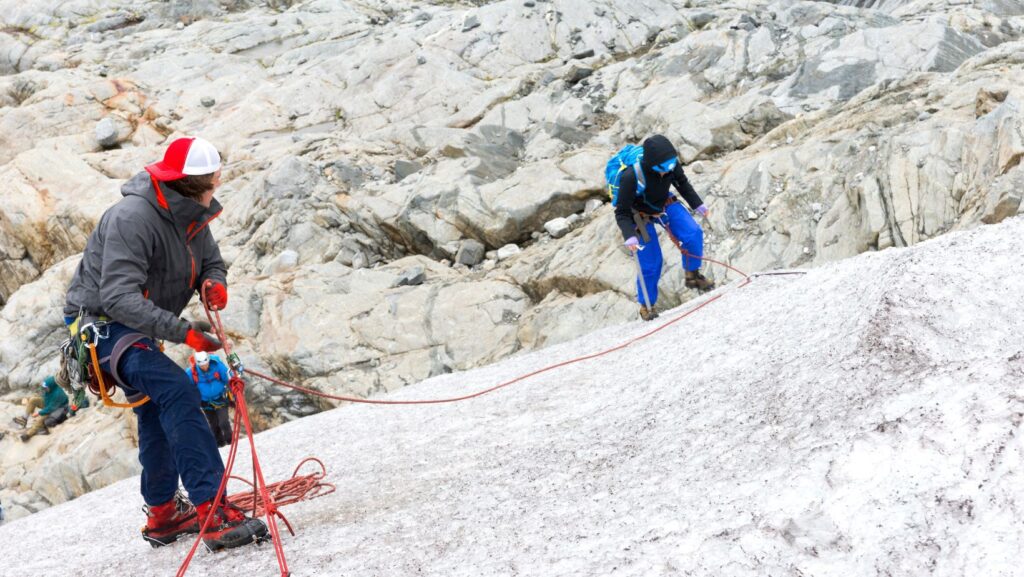Outdoor Gear Patches
Protection of outdoor gear isn’t a fool’s errand, it’s a significant process in ensuring long-term use, cost-effectiveness, and safe adventures. These instruments, be it a backpack, tent, or boots, face vigorous usage, from bearing weight to resisting weather extremities. They brunt pressure during hikes, wear during camping, tension in fishing trips, in short, they endure harsh environments to keep us safe and comfortable.
Patches, when strategically applied, these act as a shield against damage, safeguarding gear integrity. They don’t just patch up a hole or tear, they provide a protective layer, fortifying the gear and arresting any further deterioration. Moreover, patches can resolve gear issues in no time – a key advantage when you’re out in the wild, where resources and repair shops aren’t within easy reach.
Knowledge of gear damage causes is a necessary tool in proactive maintenance. Physical wear and tear top the list due to extensive use. Constant movement, chafing against surfaces, or overstuffing of your backpacks, they all contribute to gear degradation. Environmental factors like exposure to sunlight, rain, or extreme temperature, all take a toll on the gear, accelerating its wear and tear.
Negligence also plays a catalytic role in gear damage. Non-observance of storage guidelines, improper cleaning or drying, or general disregard toward minor damage can contribute to a speedier breakdown of your outdoor items.
Choosing the Right Outdoor Gear Patches
The compatibility of patch material with your outdoor gear determines the success of the repair. By way of example, a nylon patch adheres better on nylon fabrics, whereas leather patches remain perfect for leather-based items. It’s important to know that patches designed for synthetic fabrics like polyester or nylon may melt or degrade when applied to natural fibers. Moreover, specialized patches that adhere to heavy-duty fabrics such as canvas or denim might not stick as effectively to lighter materials.
So, it’s paramount to ensure the patch material is compatible with your gear’s fabric. This compatibility typically hinges on the fabric type, thickness, flexibility, and even weather resistance. Durability plays a crucial role when you’re picking gear patches. As mentioned earlier, outdoor gear tackles tough weather conditions and physical wear and tear. Hence, patches should withstand these challenges too. Assessing patch durability revolves around understanding its material constitution, thickness, and resistance to environmental conditions. Gear patches made of robust materials such as nylon or specialized synthetics usually present high durability.
An extra layer of protection, like waterproof or UV resistance features, can also enhance a patch’s durability. Not to mention, high-quality adhesive ensures the patch stays in place, despite rugged activities or harsh weather conditions. Remember—choosing a durable patch ensures an effective repair and prolonged gear lifespan. That’s why it’s essential to assess a patch’s durability while making your choice.
Steps to Apply Outdoor Gear Patches
First things first, cleaning is the vital step before starting the repair process. Ensure the area you’re going to patch is clean, free of debris and dry. A clean surface helps the patch adhere correctly and efficiently. Use a mild detergent or gear cleaner and lukewarm water to remove any dirt or grime. After washing, let your gear dry well, as moisture will hinder the patch from sticking. Remember, gear preparation is akin to laying a strong foundation for the patch work; therefore, it’s importance can’t be overstated.
One key technique in patch application involves using the right adhesive. While some patches come with pre-applied adhesive, others require a separate one. In case you need to apply one, ensure it is specifically designed for outdoor gear. Apply the adhesive evenly on the patch, ensuring it seeps through the entire area to ensure a firm grip.
Moreover, alignment is crucial for a perfect patch job. Align the patch properly to cover the damaged area entirely. A well-placed patch integrates well with your gear, ensuring the repair is neither visible nor affecting the gear’s function.
Pressing the patch against your gear also forms part of the application process. Many patches require a firm hand to bond well with the gear. Therefore, apply adequate pressure to ensure the patch adheres fully and evenly. Lastly, always let the patched gear rest before use. This resting period, often a few hours or more, enables the patch to bond securely, increasing its durability and effectiveness.

